Ancient water mills, castles, and abbeys are part of the magic of an Irish road trip – especially when you get the whole experience in one town – Kells Ireland.
We had always wanted to make it to Kells but it was one of those places that were “almost close enough to Kilkenny to make it” and “no way, that’s going to take us an hour in the wrong direction”. Luckily the casting vote was made by a less-than-reliable Garmin GPS.
Sometimes getting lost reveals amazing things
The errant Garmin managed to take us in concentric circles for half an hour before facing off with a hedge trimming combine harvester, with no way to go but hastily in reverse down the tiny single lane. Caffeine deficient and hangry, we vanquished the one with zero sense of direction to the back seat – with a satisfying toss that gladly didn’t damage it for good. Driving vaguely in the sense of the motorway poking its head above distant hedgerows, we stumbled upon the turn off to the next town – it was a sign and that sign said, KELLS.
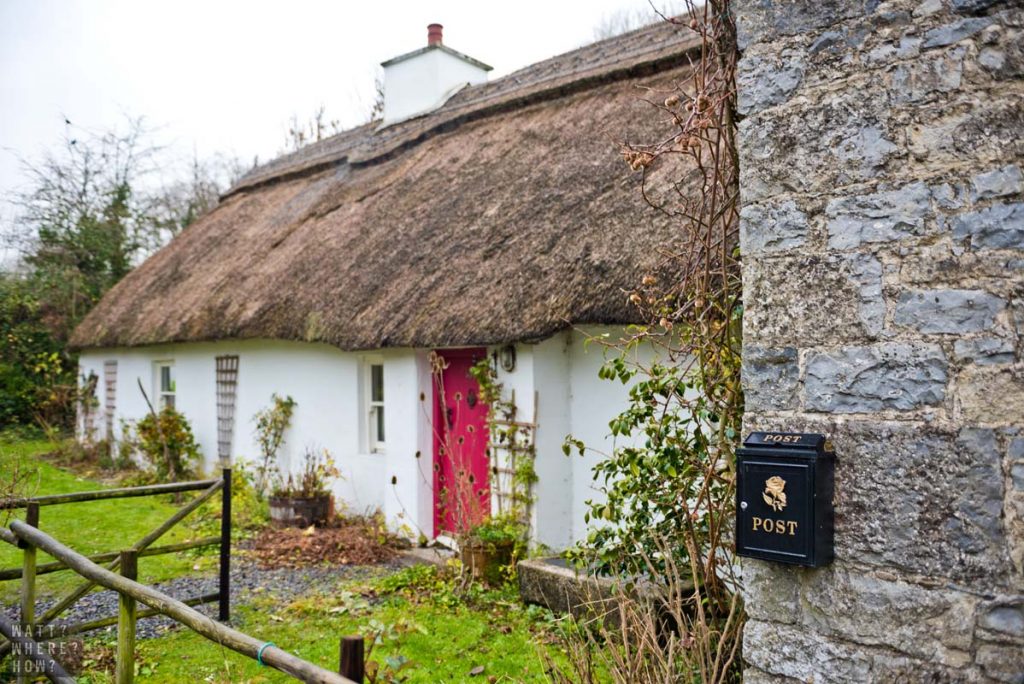
You know a town is going to be something else when the first thing you see is a cute-as-a-button thatched cottage and an old stone watermill.
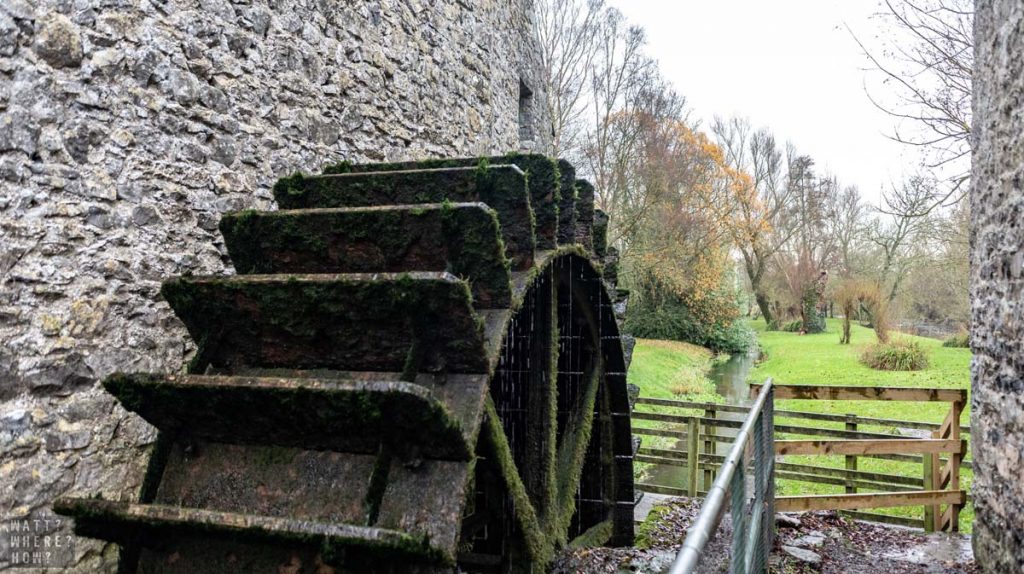
Mullins Mill
The Mullins Mill has been a feature on the river dating back to the 13th century, when it would have ground flour for the castle and priory. The old stone façade currently in its place dates back to 1782 where it operated successfully up until the death of the last Mullins family miller in the 60s.
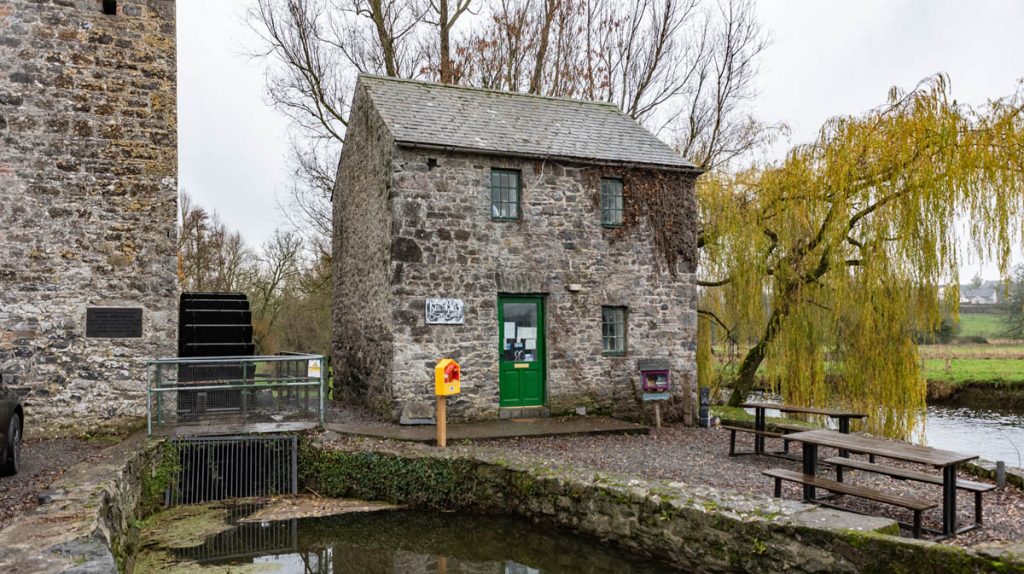
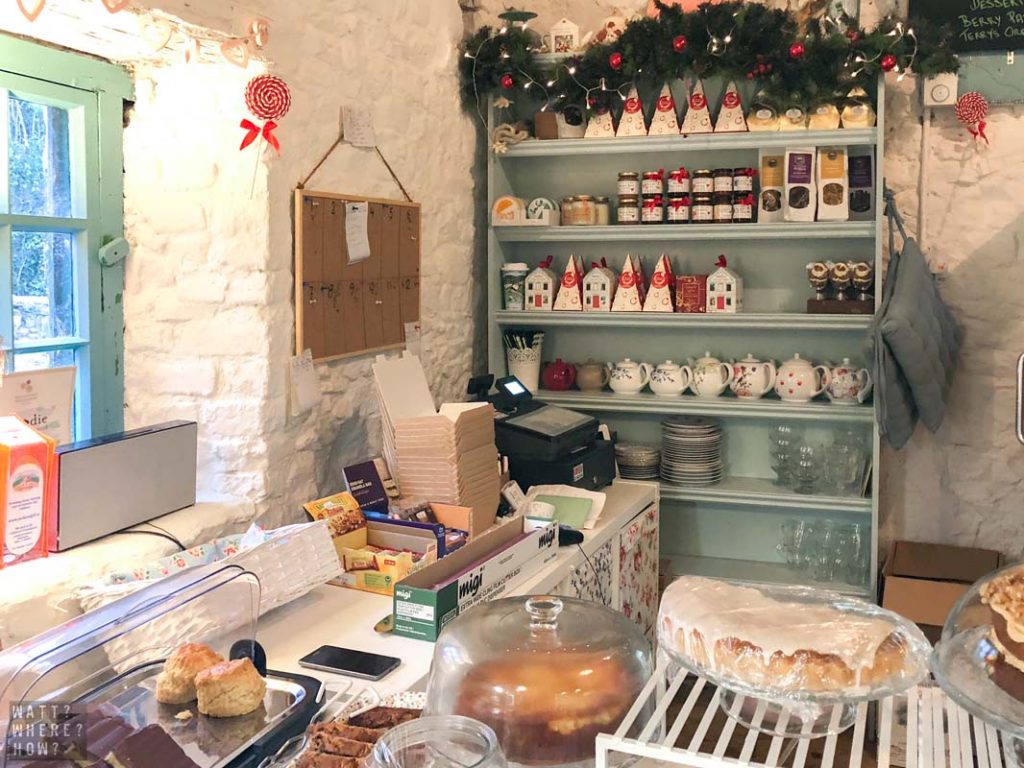
Now it’s a cozy cafe with an art space in a separate shed beside the water wheel – Jen’s at Mullins Mill. Entering in from the brisk day outside, the mill exudes warmth. The old millstones, pulleys, and wooden chutes are long dormant, instead, draped with festive tinsel and light to celebrate the holiday period.
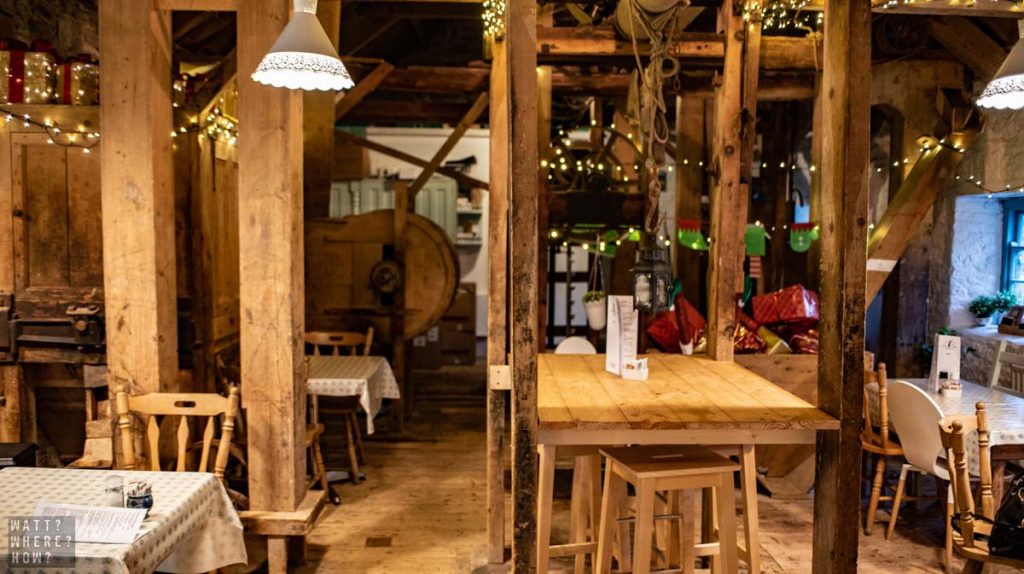
There’s a group of local ladies catching up for a tea and scones, a couple of mothers with young children in tow, and two slightly lost Australians. Failing to secure the scones with cream and fresh-made jam which have been cleaned up by the ladies who lunch, we settle on a dinosauric sausage roll, also a delicacy back home – it almost brings a tear to the eye.
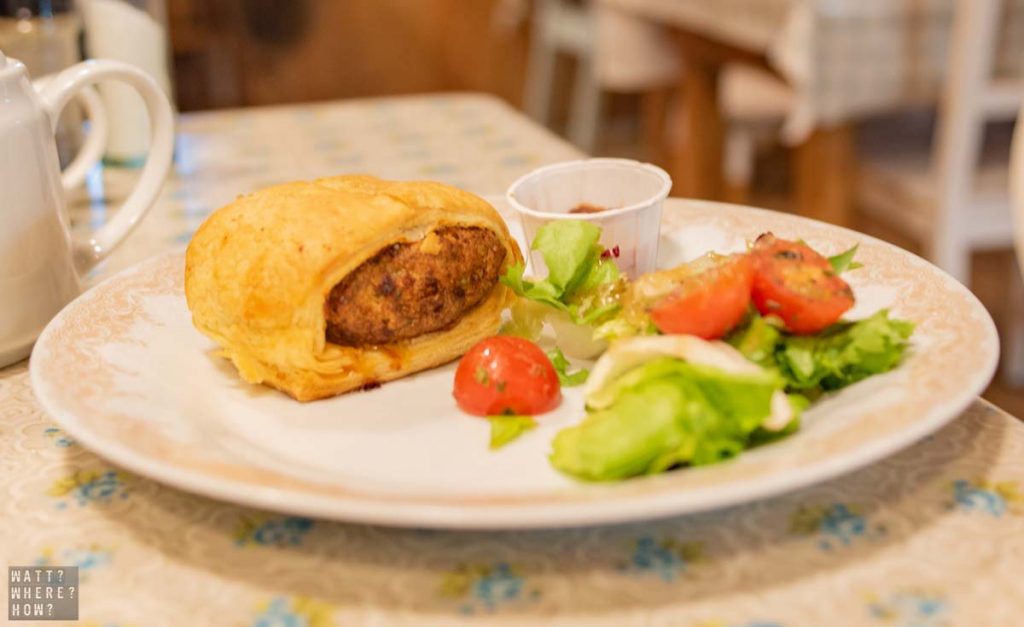
With the intention of just stopping in for a bite on our way to Killarney, the hostess suggests we take a walk via the “loop” path before we leave town, taking us along the river through the Kells Priory and back in to town.
Passing quaint thatched cottages and dodging thick brambles, we round a turn where we’re greeted with two impressive sights, an old 19th century water mill and the ancient stone ruins of the Kells Priory.
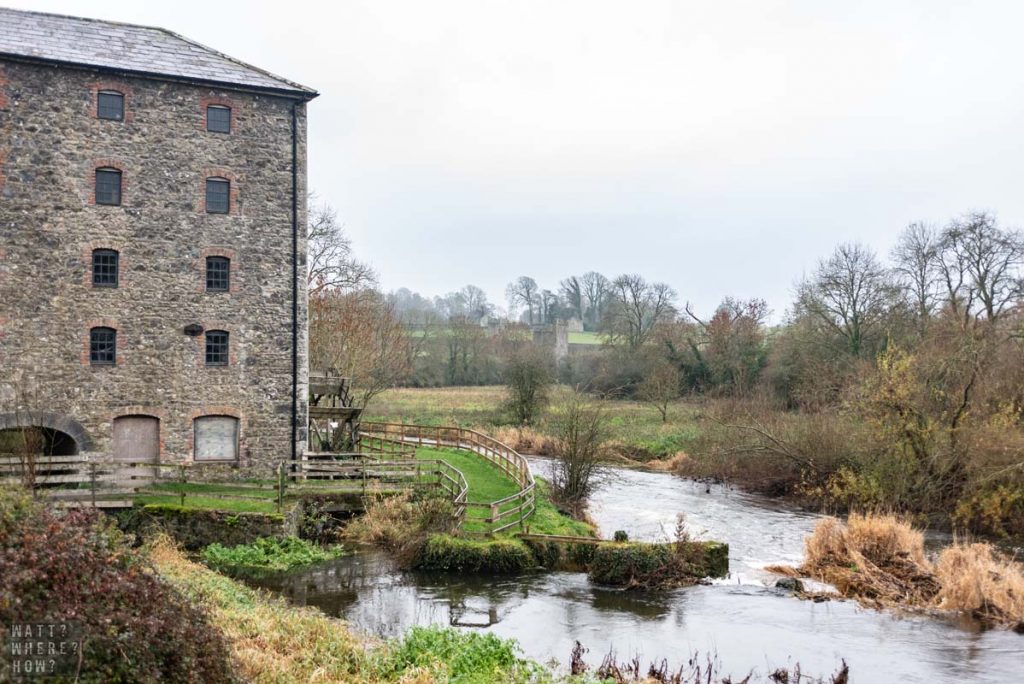
Hutchinsons Mill
Unlike the stone mill by Kells Bridge, Hutchinsons Mill, built around 1800, has the stark utilitarian facade of the late industrial era, where cement and functionality overshadowed any pretense of design aesthetics. It looks abandoned and rundown, though an ample muddy car park would hint at otherwise. The mill stream diverted from the Kings River rushes through a channel beneath the building and under a decrepit wooden bridge covered in a thick carpet of moss and lichen.
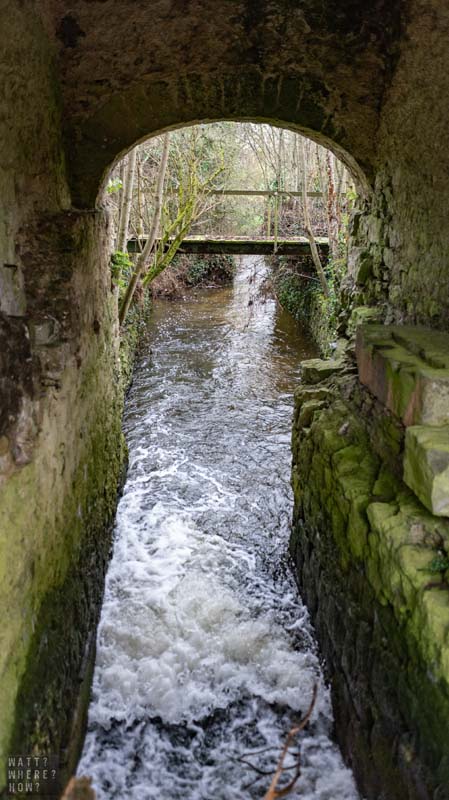
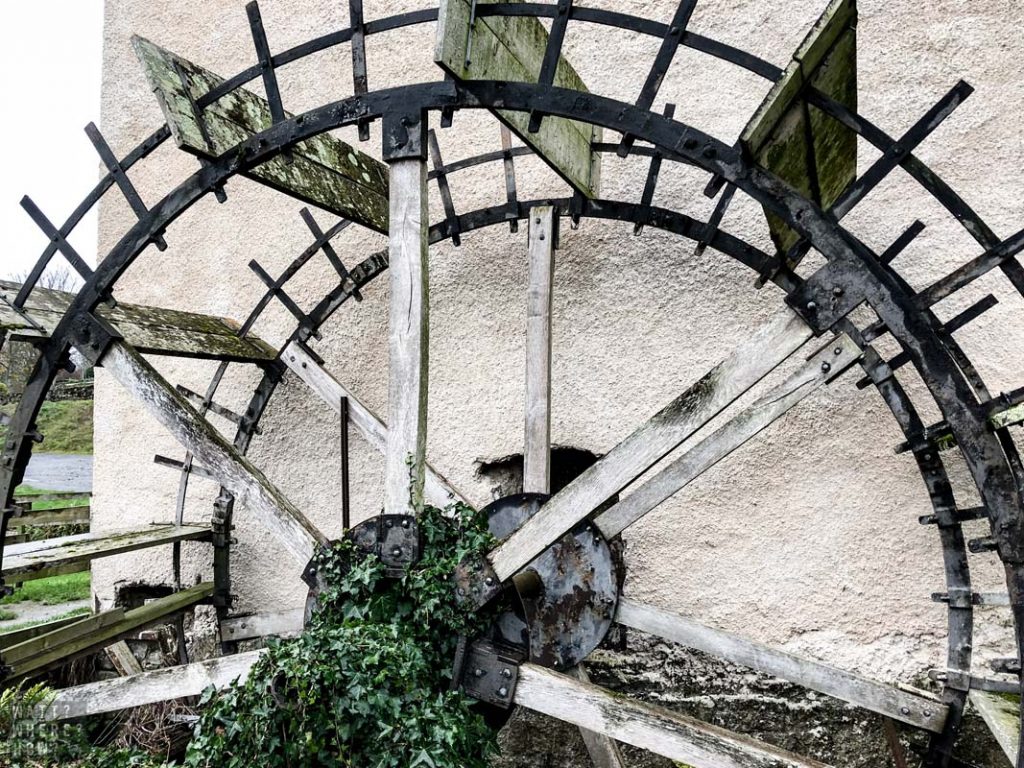
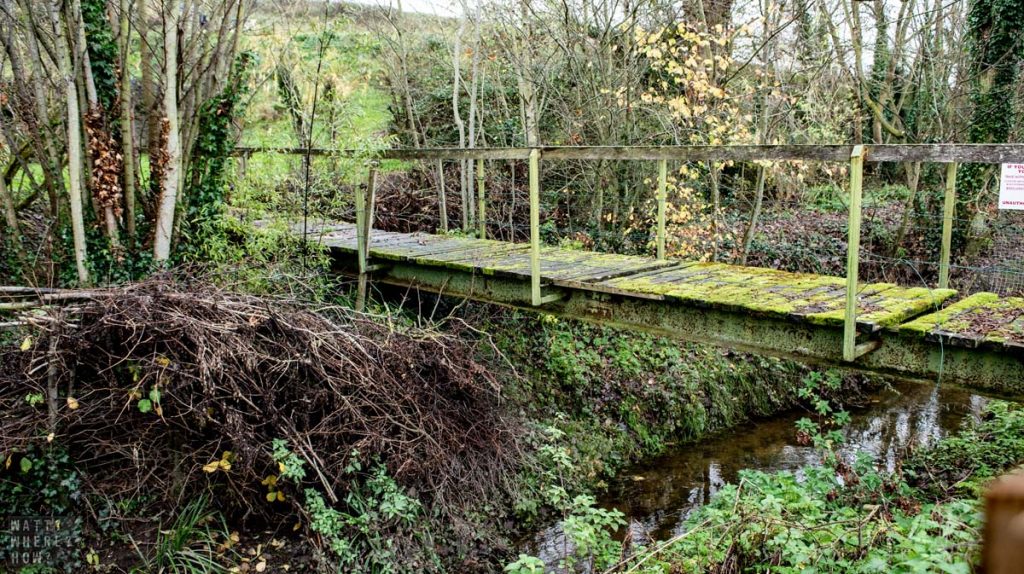
The wheel no longer turns. Its paddles are either broken off or too narrow to generate any power if there wasn’t a rusty guard preventing motion. The river flows quickly at this point, so it’s easy to imagine the force it could have generated for the mill’s activities. Skirting the puddles and slippery surfaces to traverse the mill, we look up to see a modern glass balcony on the top floor and satellite dishes on the roof. Not only is the mill inhabited, but the owners also get to enjoy stunning views of the priory every evening. The river is also a popular destination for anglers during summer’s trout fishing season.
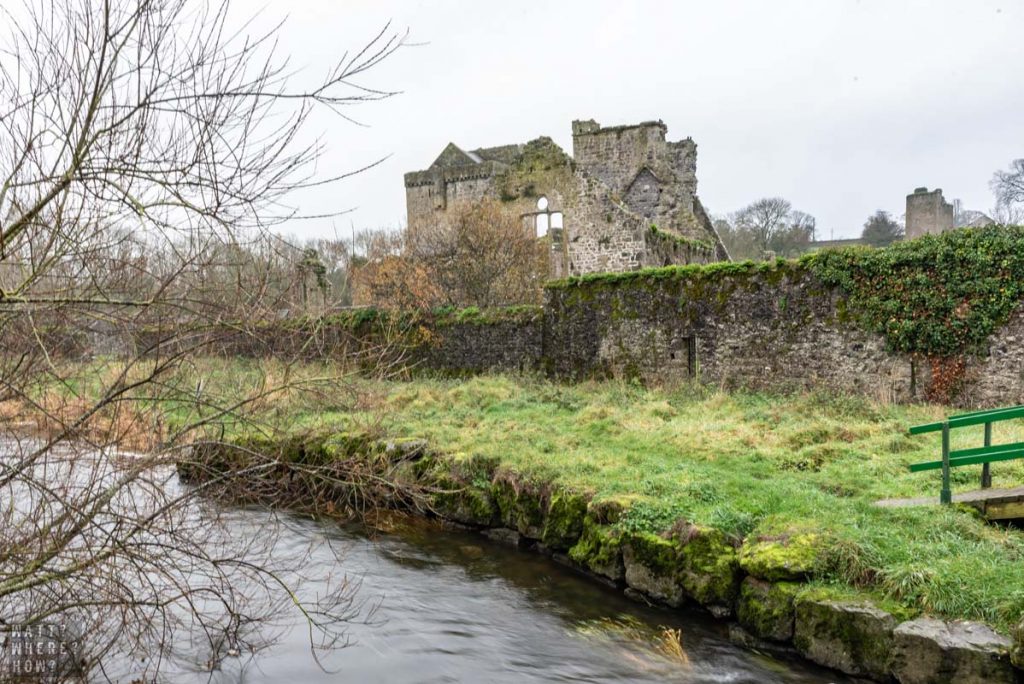
The stunning Kells Priory
After crossing a small wooden footbridge, we’re confronted by the Spartan beauty of Kells Priory, the largest monastic monument in Europe. This ruined abbey once housed a community of Augustinian monks. The palatial three-acre site dates back to 1193 when it was constructed by Geoffrey FitzRobert, brother-in-law to Irish knight, Strongbow.
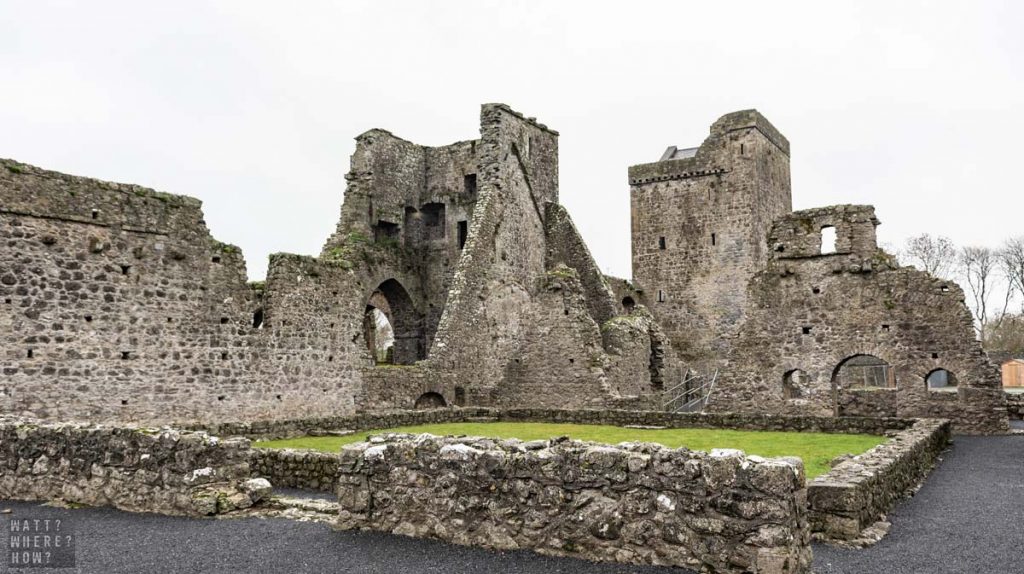
Its first 150 years saw invasions and sackings leading to the construction of a series of defensive towers. The distinct structures have led to it being known locally as the Seven Castles. Archeological digs have found evidence of a mill, a brewery and an infirmary amongst traditional structures like the cloisters. A side chapel is a storehouse for pieces of stone awaiting their return to the walls of what is easily one of the world’s biggest jigsaw puzzles.
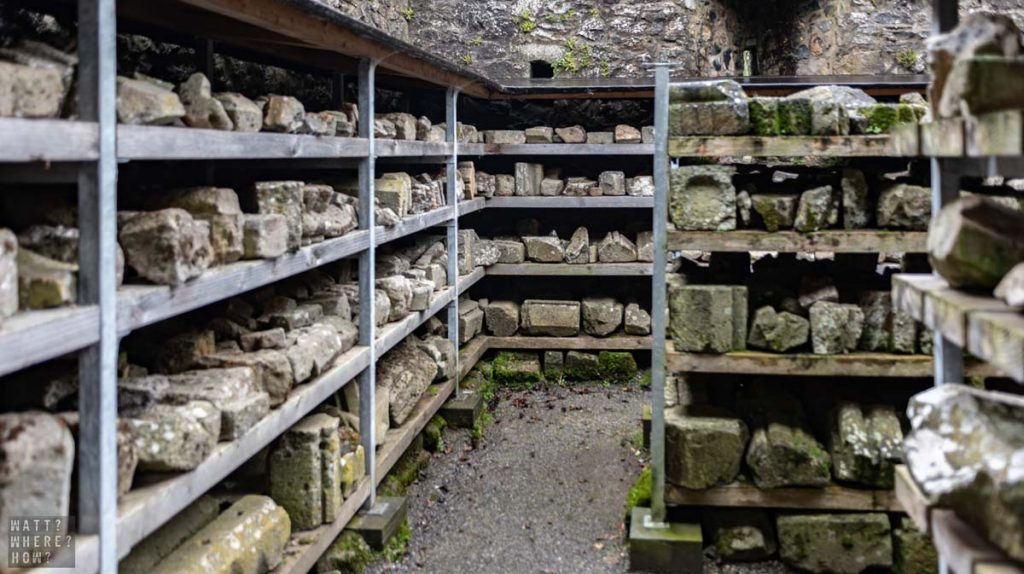
Unlike most sites of this magnitude, Kells Priory is open all-year-round, free of charge. On this particular day, we are the only ones exploring the grounds, adding to the mystique of the moment.
Outside the walls an ancient cemetery is almost lost under thick growth. Headstones are fallen and time and Irish winds and rain have sand blasted away any recognizable names or dates.
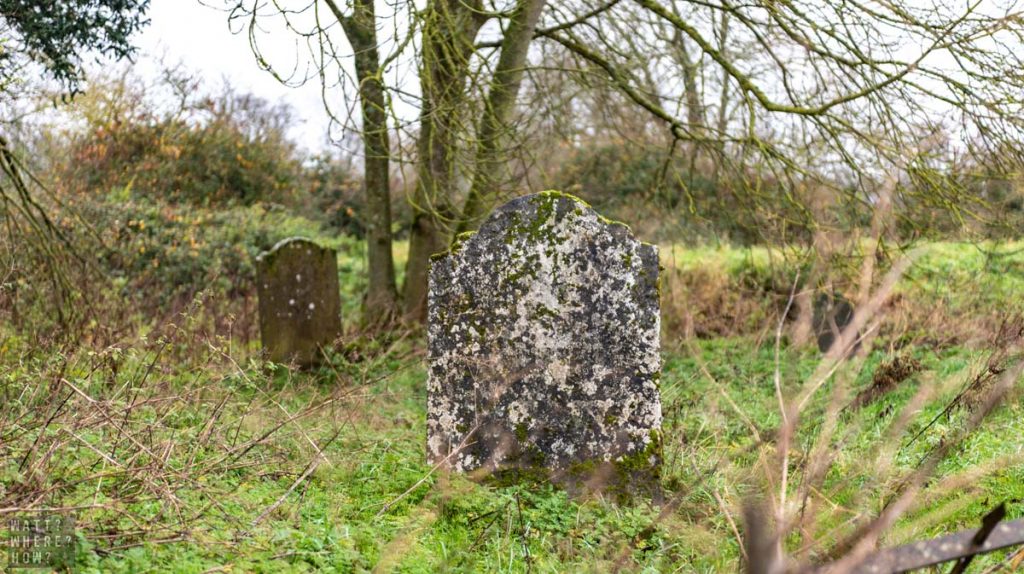
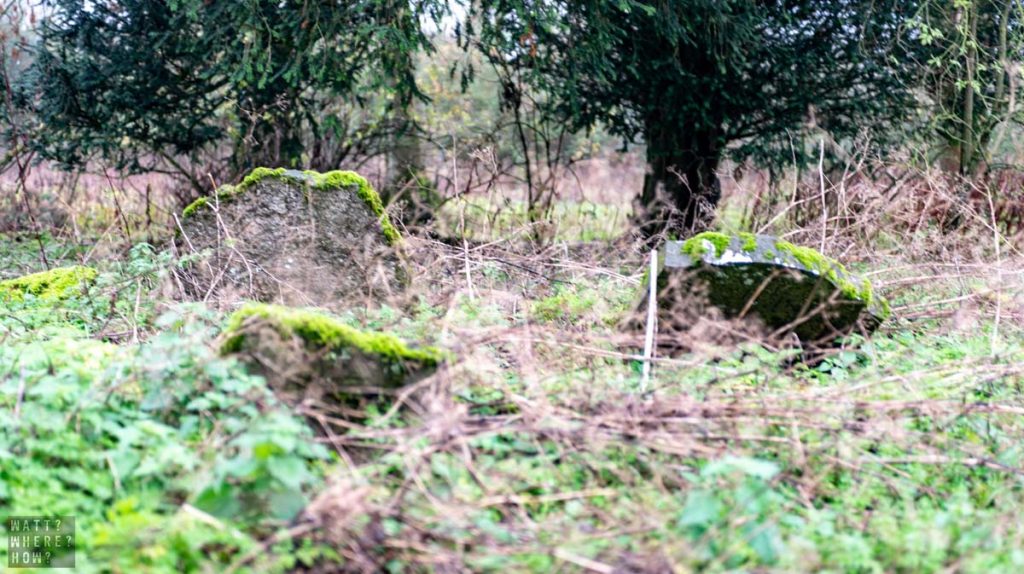
The cloisters and main abbey nave are sad ruins, destroyed by the dissolution of the sixteenth century when Henry the Eighth closed and destroyed Catholic Churches and monasteries across his kingdom in favor of his new Church of England.
Being the off-season the priory is undergoing renovation and workmen are heard clattering away under tarpaulins and up on scaffolding set against one of the seven towers. In its heyday, the priory was as strong as a fortress, a walled citadel in its own right.
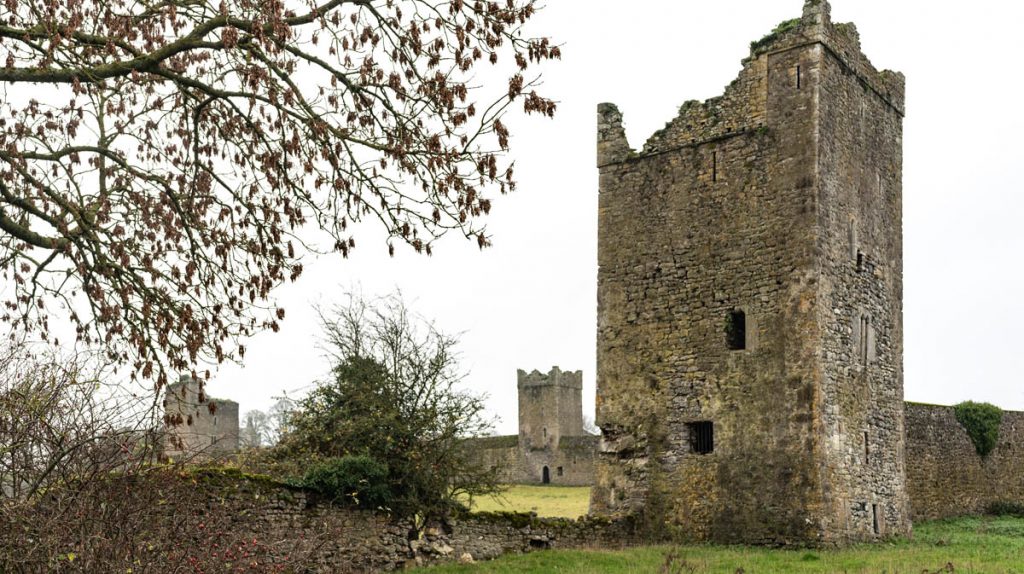
It’s Kells Ireland, but not THE Kells Monastery, Ireland
Contrary to the name, this isn’t the Kells where the early ornate manuscripts were lovingly and artfully drawn. There is some level of historical conjecture as to why or why not, but the common belief is that it was the product of an abbey in another Kells, close to Dublin. We’re happy to imagine it happened here. The setting is so tranquil you can easily see the monks of the 13th century laboring in the surrounding fields or pouring over vellum and parchment with quills and colorful inks, inspired by the peace and natural beauty of the area.
Kells Ireland offers an endearing calm and a welcome detour from Kilkenny and although it’s not “the” Kells, the pure scale of the site and the addition of the water mills makes it a worthy addition to any Irish road trip.
For more great Irish road trip and holiday ideas to add to your itinerary, browse our Ireland vacation inspiration.
Like it? Pin or share!
WHAT?
Kells, Ireland is a village close to Kilkenny with a historic Augustinian priory and two picturesque watermills. Kells Priory is the largest enclosed ecclesiastic site in all of Ireland, with its many turrets protecting the community of friars and abbots for centuries.
WHERE?
Kells Ireland is a village 15km south of Kilkenny, by Kings River.
HOW?
We stumbled on it completely by accident, but there is no clear public transport there, so you will need a car.


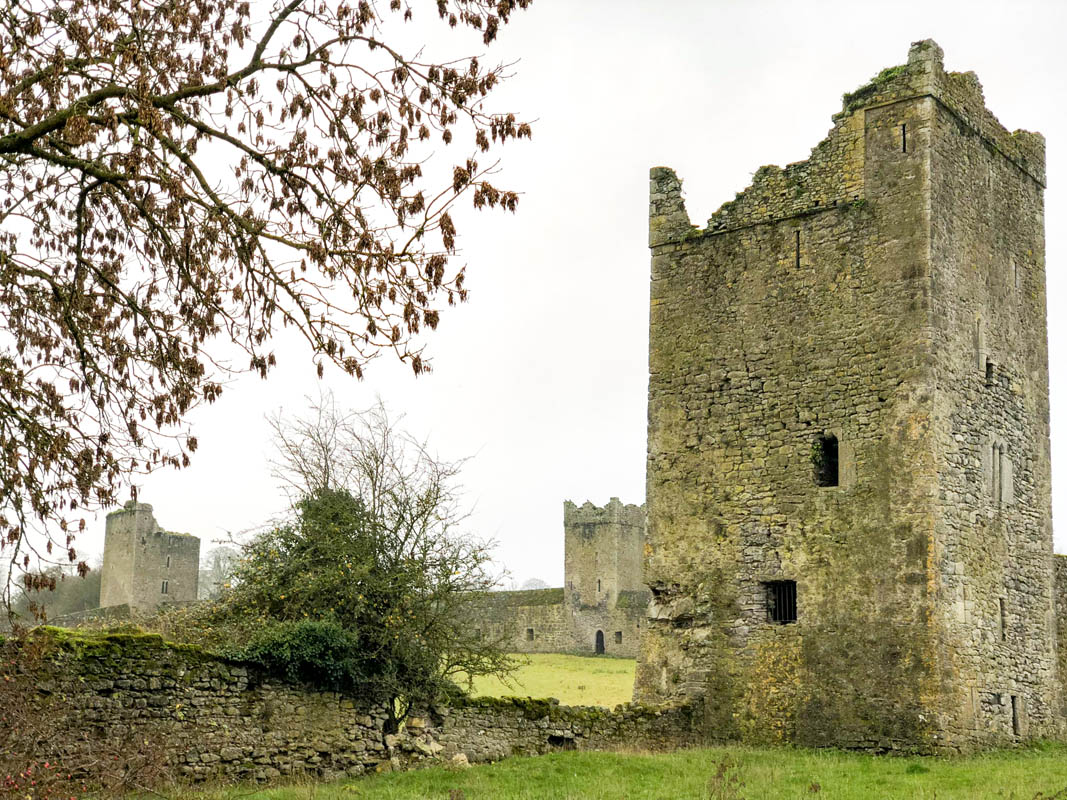
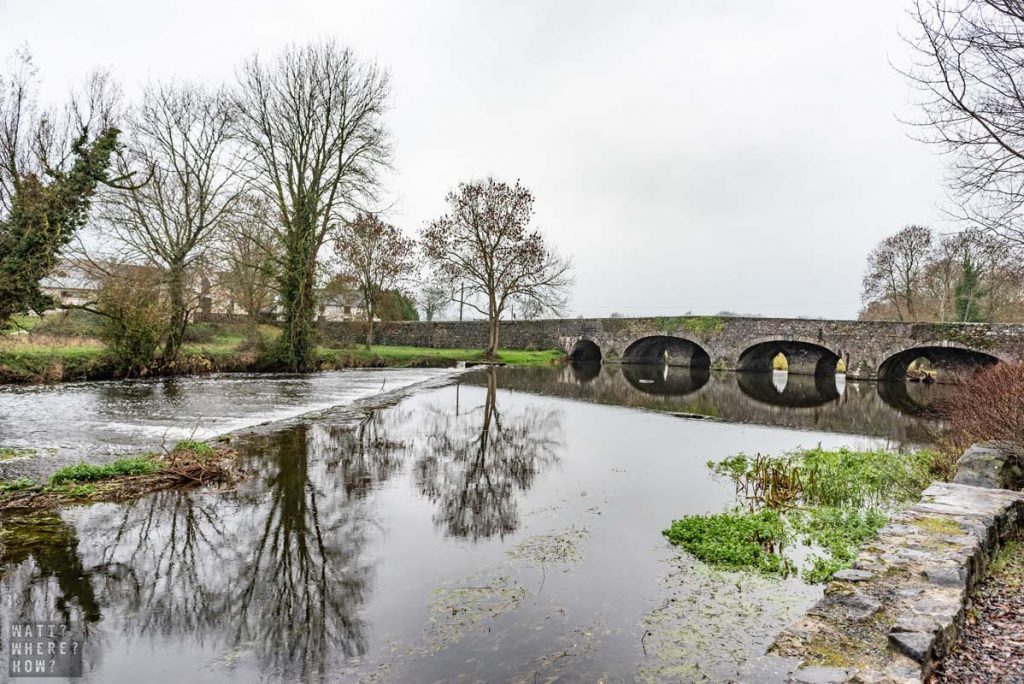
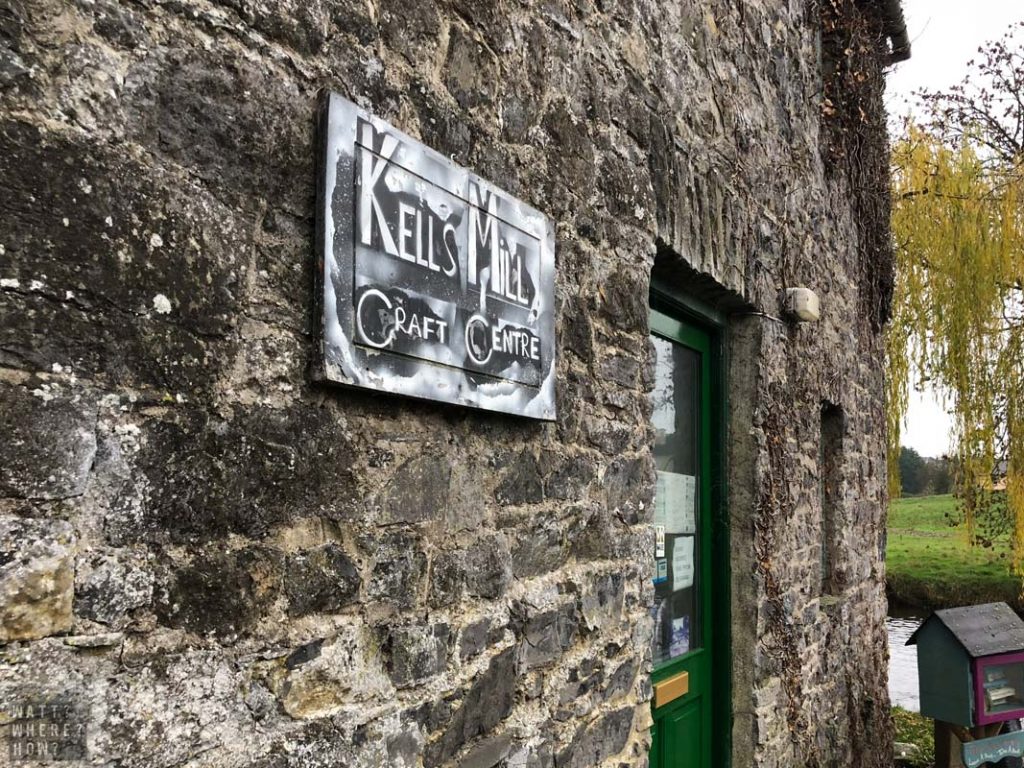
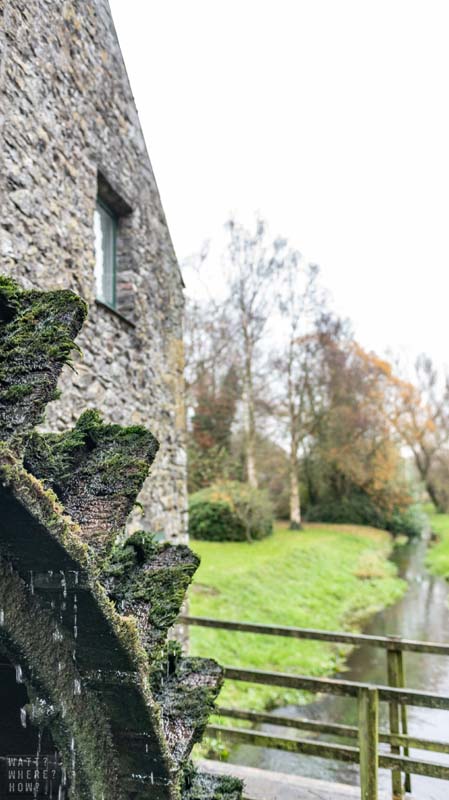
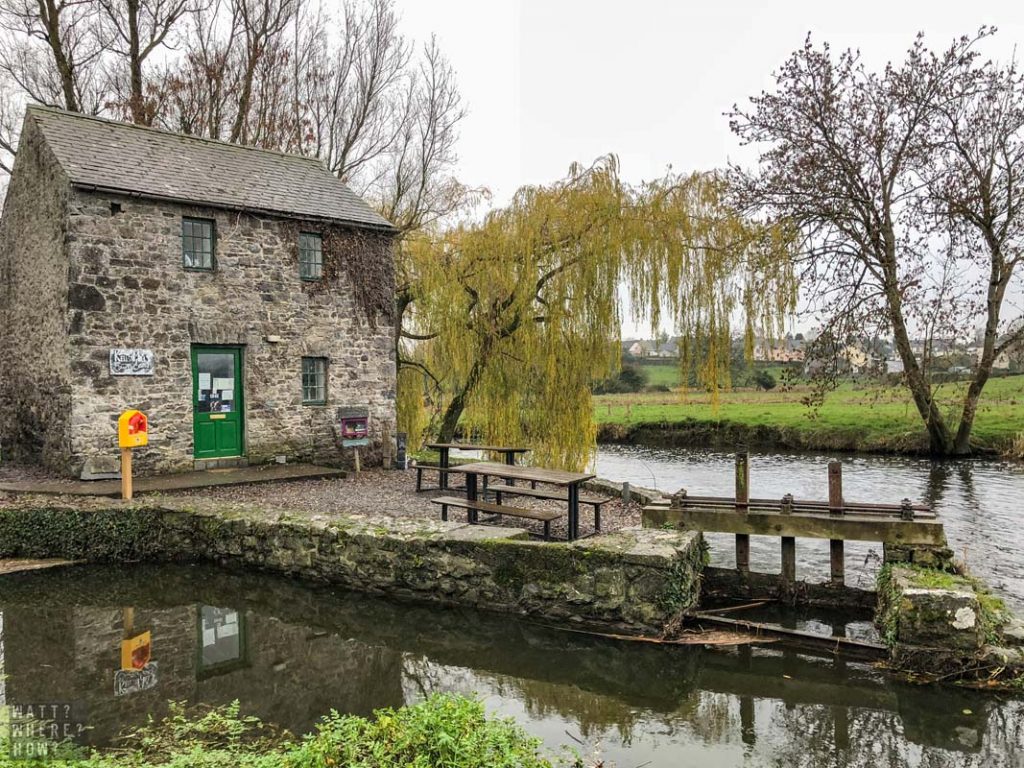
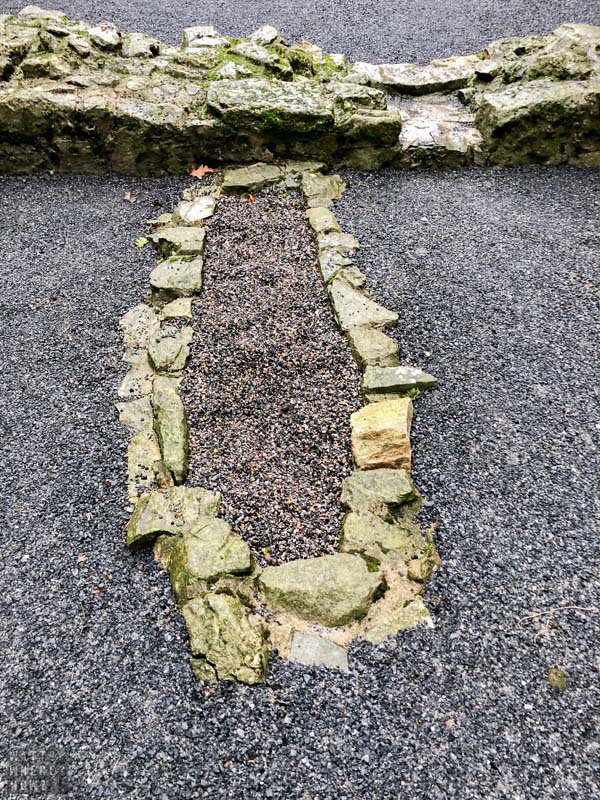
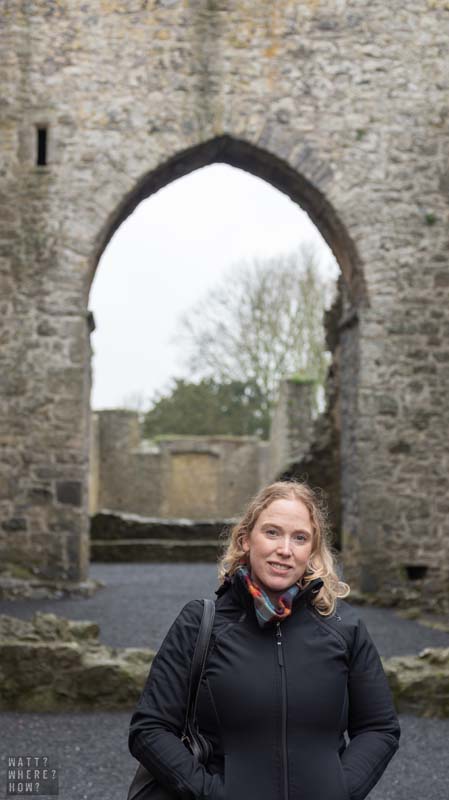
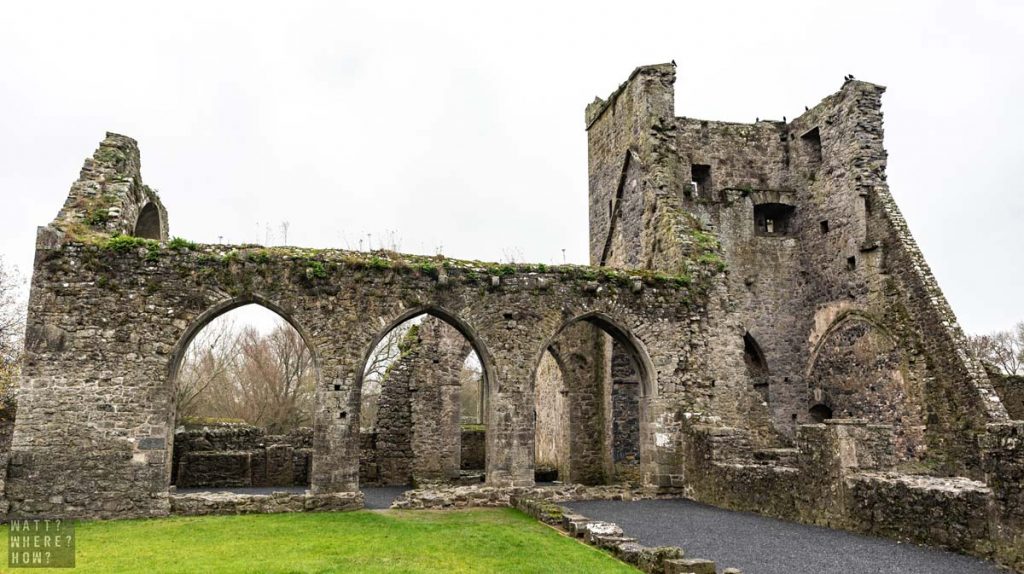
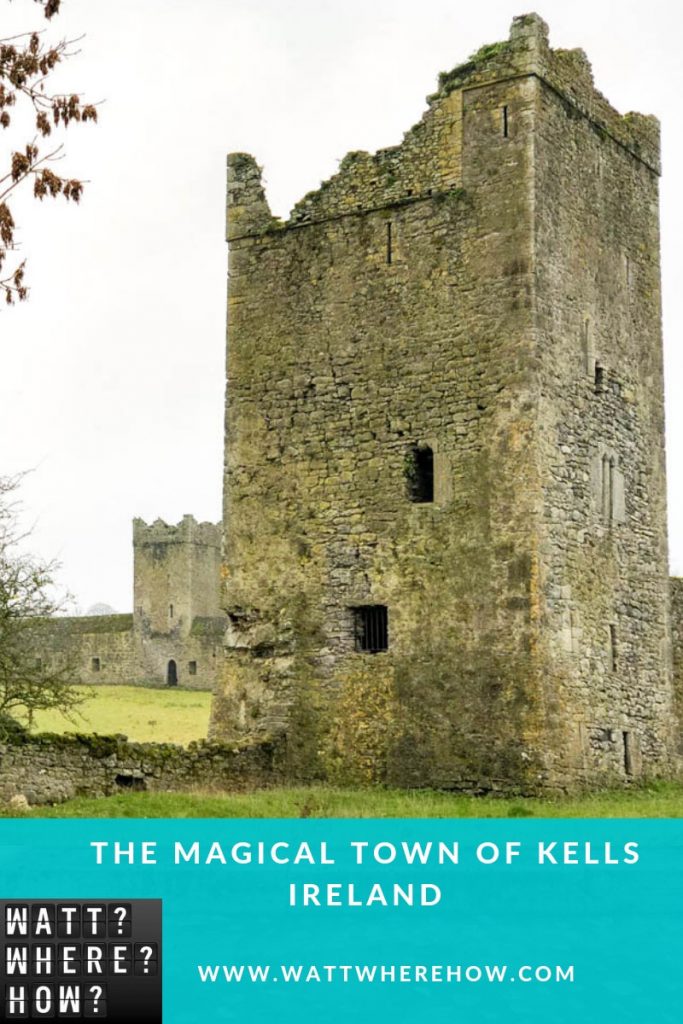
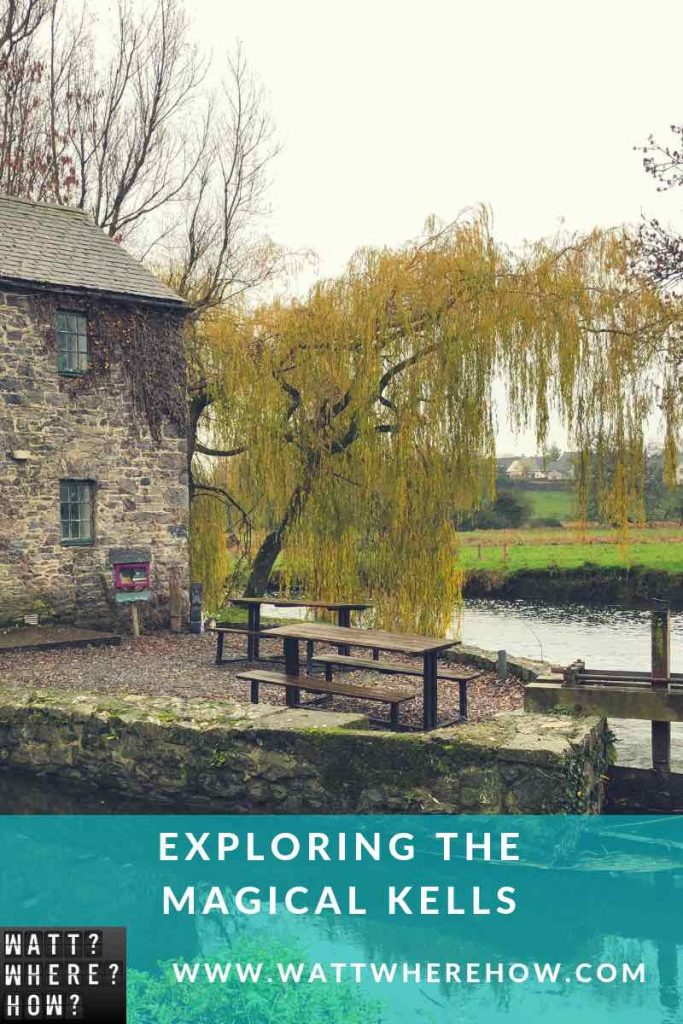
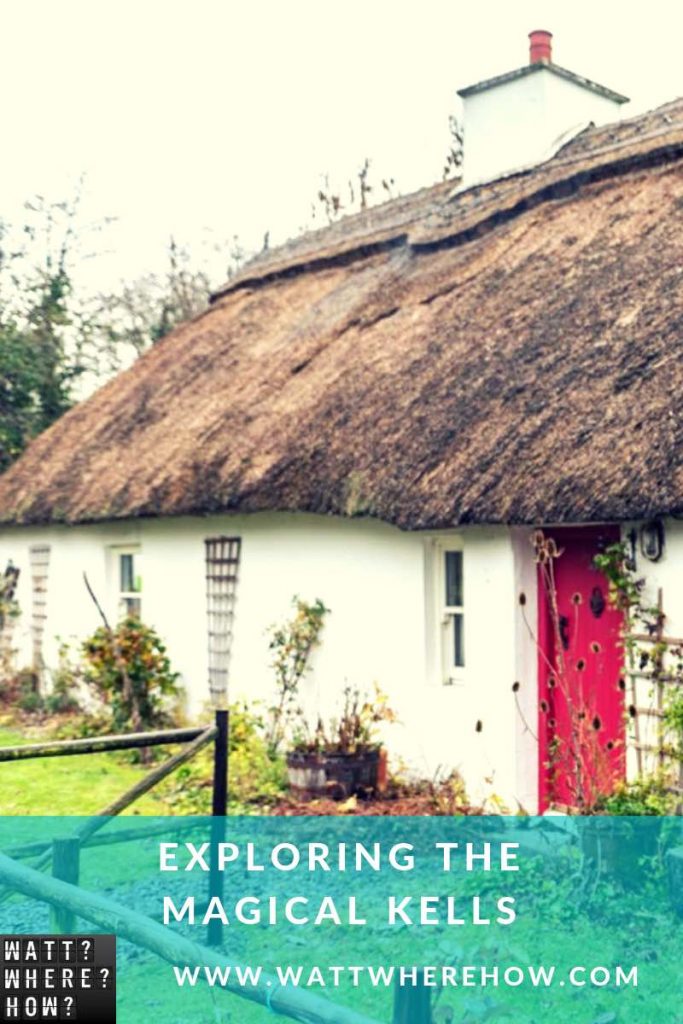
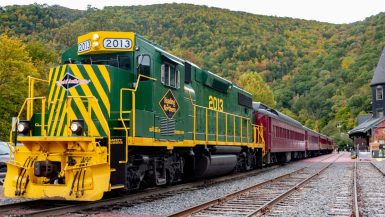
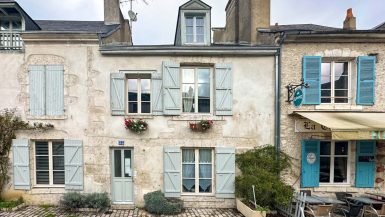
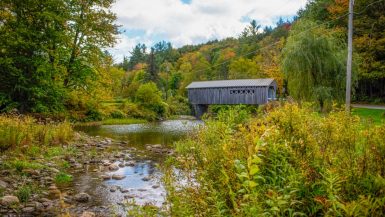
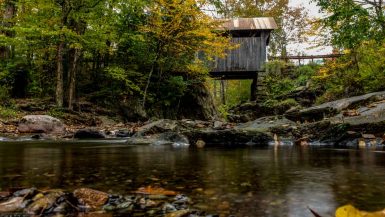
A really nice post on a place I never knew existed. It looks beautiful though and I will be sure to check it out if ever I am in the area. I actually live about 10 minutes from Kells. In my honest opinion you are not missing much and these pictures here show a greater experience than you might of had in the actual Kells. Always great reading about your home country in a positive light. Keep up the great work guys!!
Adam @ http://roamingirishman.com/
Thank you for the lovely feedback Adam! We were obsessed with the fact it “felt” like Kells should be like and were quite sad to have ended up in the wrong place. Instead, it made for beautiful photos, a pleasant brunch and a slightly off-the-beaten-track experience that we will always remember.
Bernie and Jess